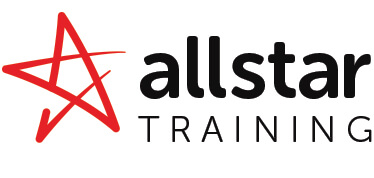Temporary Works Co-ordinator – CITB Site Safety Plus
Who should attend?
There are no formal entry requirements; however, delegates are expected to have a working knowledge of the following legislation:
- Health and Safety at Work etc. Act 1974
- Management of Health and Safety at Work Regulations 1999
- Corporate Manslaughter and Corporate Homicide Act 2007
- Construction (Design and Management) Regulations (CDM) 2015
- Provision and Use of Work Equipment Regulations 1998
- Lifting Operations and Lifting Equipment Regulations 1998
- The Personal Protective Equipment Regulations 1992
- The Manual Handling Operations Regulations 1992
- The Work at Height Regulations 2005
A key issue for temporary works is health and safety, so delegates need to be prepared to discuss how health and safety legislation is relevant to temporary works, as well as which Approved Codes of Practice (ACOPs) and H&S ACOPs may assist or contribute to safe practices in temporary works.
Delegates need to be prepared to discuss and explore all the core health and safety factors that are integrated into temporary works processes at all stages of a project, from initiation to closure. They will need to have working knowledge of all associated legislation, specifically the Construction (Design and Management) Regulations 2015 in terms of its intention and compliance. Delegates must also have a thorough understanding of health and safety principles, and understand the importance of risk management, design considerations, inspection and testing and recording and monitoring requirements.
Delegates who have achieved a certificate approved against the Health and Safety in Construction Site Supervision standard (such as SSSTS or SSSTS-R) or the Health and Safety in Construction Site
Management standard (such as SMSTS or SMSTS-R), will have gained the knowledge to meet these expectations. This is not a mandatory pre-requisite, but delegates with these achievements will benefit from having this knowledge before attending the course.
Course Aims & Objectives
The aim of these courses is to focus on the risk management of temporary works with particular attention on the role of the TWC.
They seek to consolidate and build on the risk management knowledge that delegates undertaking this role will have established through other experiences on site (likely in other supervisory and management roles) and focus on how to avoid failure in temporary works by adopting appropriate procedural controls, as outlined in BS 5875:2019.
Course Outline
The TWCTC course will cover the following topics:
- the need for and duties of a TWC
- the other key roles involved in temporary works
- the use of BS 5975:2019 in relation to the role
- typical documents used in temporary works
- other legislation and guidance that interact with temporary works
- the importance of the 4Cs: communication, co-ordination, co-operation and competence
- the need for risk management.
Delegates taking this course should be able to achieve all the learning outcomes listed below by the end of the course.
Module 1 – What are temporary works?
- Types of temporary works
Describe the different types of temporary works and temporary works solutions.
Module 2 – The history of temporary works
- The history of temporary works and its legislative framework
Describe the history that set the requirements for a series of changes to create a robust, safetyconscious process for the design, management, installation, and removal of temporary works.
- The causes and consequences of failure
Explain the hazards, risks, causes and consequences of failure in temporary works.
- The avoidance of failure
Describe the techniques used to avoid failure, focussing on the 4Cs.
Module 3 – Who is involved with temporary works
- Stakeholders’ and duty holders’ responsibilities and accountabilities
Describe the key roles and responsibilities of the primary stakeholders responsible for managing the safe implementation, management and dismantling of temporary works, including the appointment of key roles.
Module 4 – Planning temporary works
- Management and control of design
Explain the management and control of the design, materials, components, and key solutions.
- Key processes
Describe the key processes that form a safe system of work.
- Procurement
State the key elements involved in appointing competent organisations, designers, and contractors to manage the execution of the works on site.
- Risk classification
Describe the importance of implementation risk classification and its impact on design and risk management.
Module 5 – Managing the construction, erection and dismantling of temporary works
- Key activities required during the active life of the temporary works
Explain the key considerations for the co-ordination, supervision and checking of works on site during the construction, erection and dismantling of temporary works.
Certification
On successful completion of the course, delegates will receive a CITB Temporary Works Co-ordinator Training Course certificate which is valid for 5 years.
Duration
2 Days
Location
We can offer courses on company premises for a maximum of 12 delegates or upcoming open courses in your local area.
